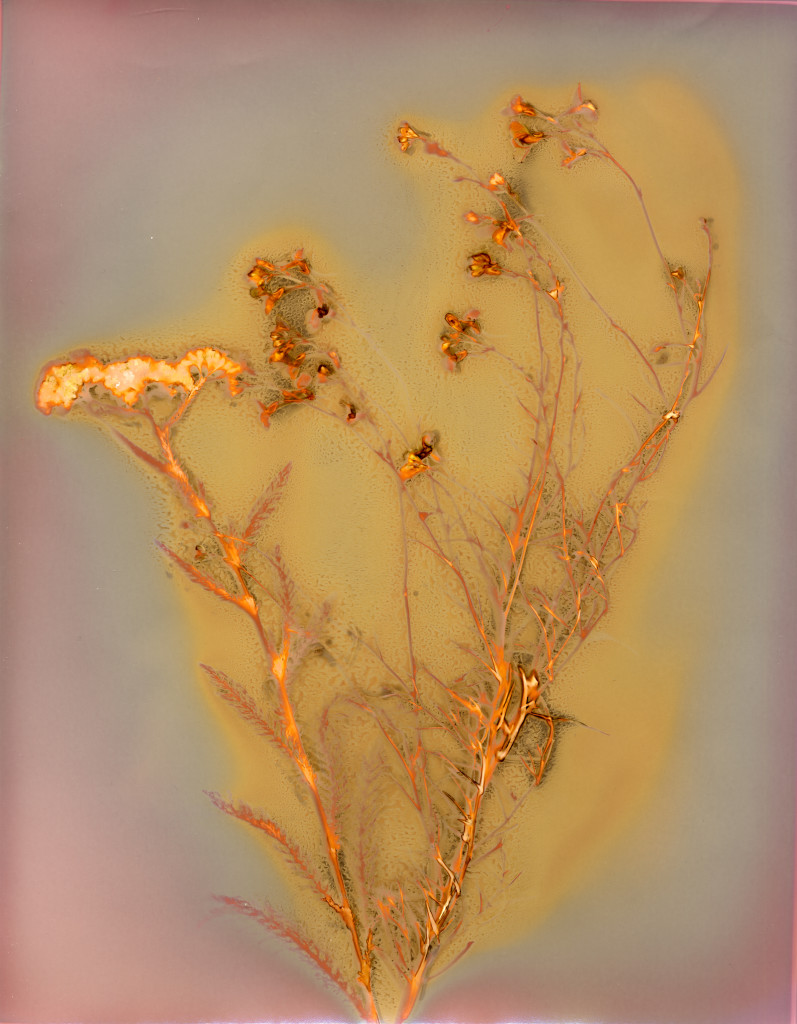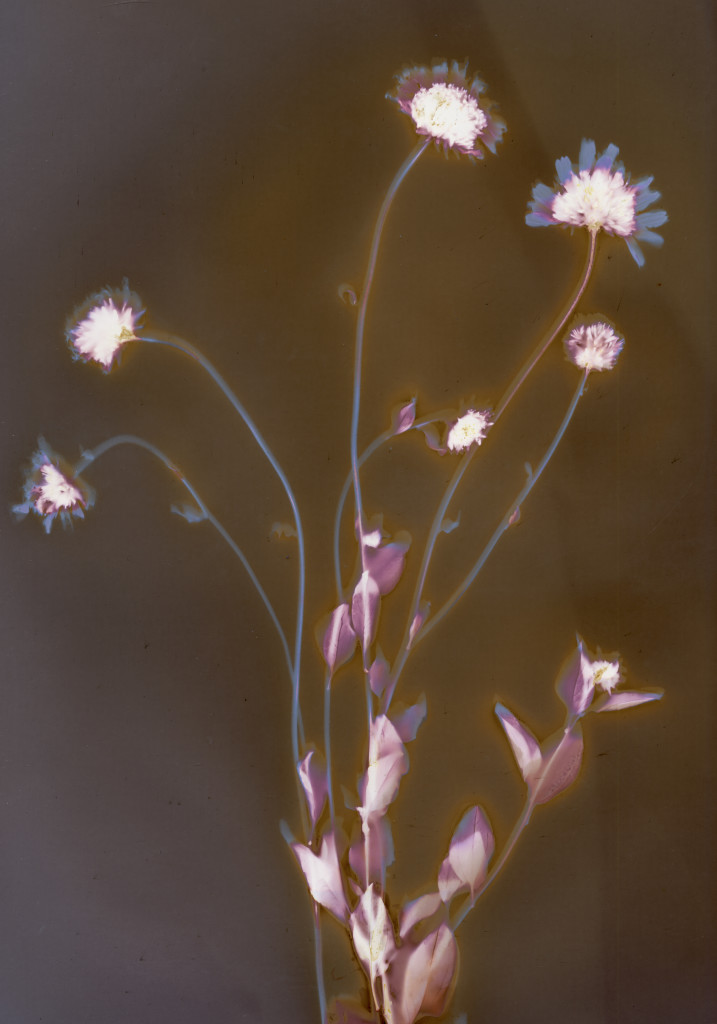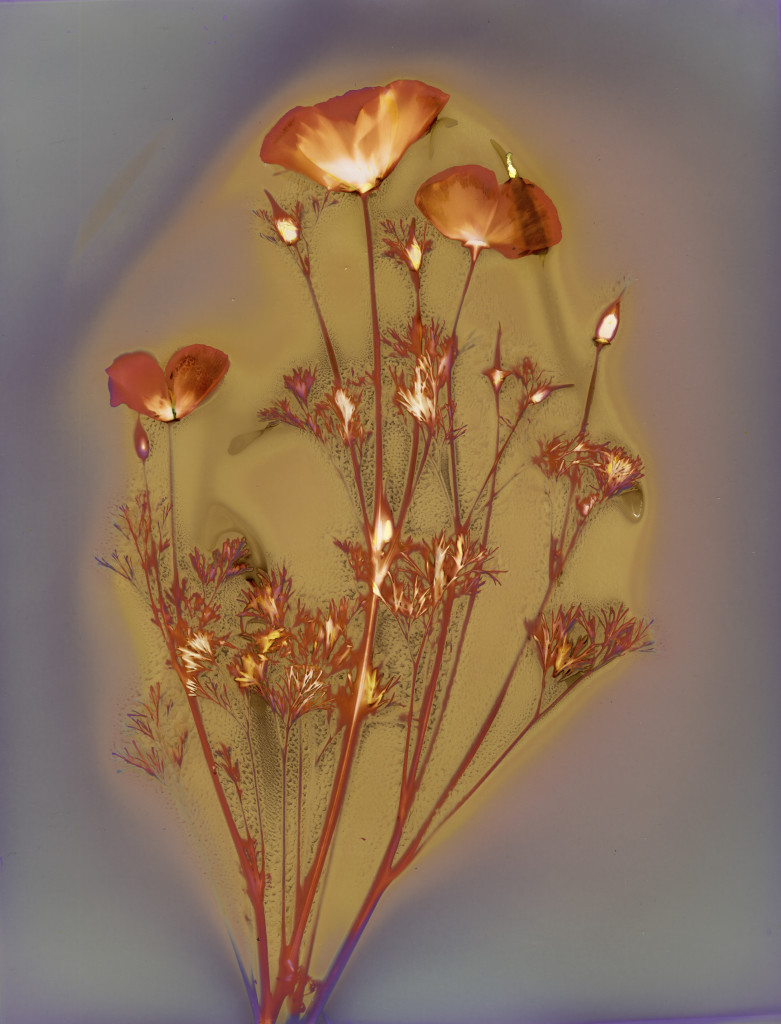Jerry Burchfield first mentioned the term “lumen print” in regards to his Primal Images series and the book, Primal Images: 100 Lumen Prints of Amazonia Flora.
In photographic terms lumen prints involve a printing-out process using aged black and white photographic papers. The plant (or object) specimen is placed directly on the unexposed B&W paper, sandwiched between a heavy piece of glass and a support, exposed to sun or a strong UV light source for a period of time until the desired density and color is achieved. No chemicals are used. Not a new process, lumen prints were first observed by methods used by William Henry Fox Talbot in the 1830’s who used this camera-less process for botanical specimens of that era.
Due to humidity, chemical composition of the plants, and the type of black and white paper used, an amazing variety of colors can be produced. This one of a kind image is ephemeral, even though fixed by the normal B&W process. For permanence sake, the one of a kind prints are scanned and printed out on Epson Fine Art papers.


